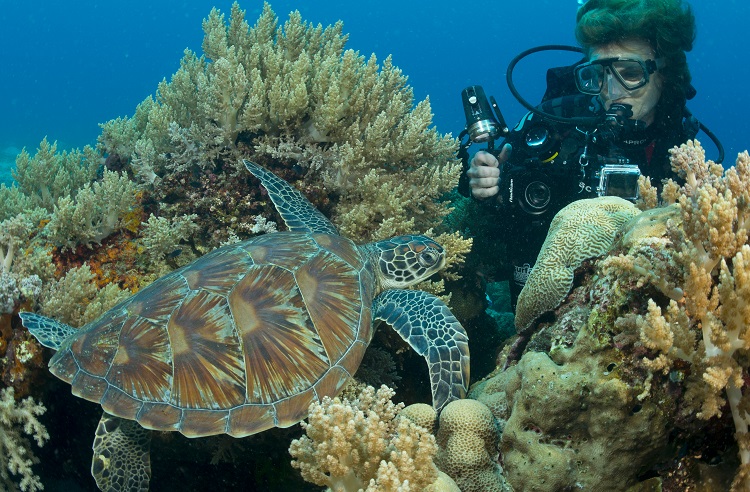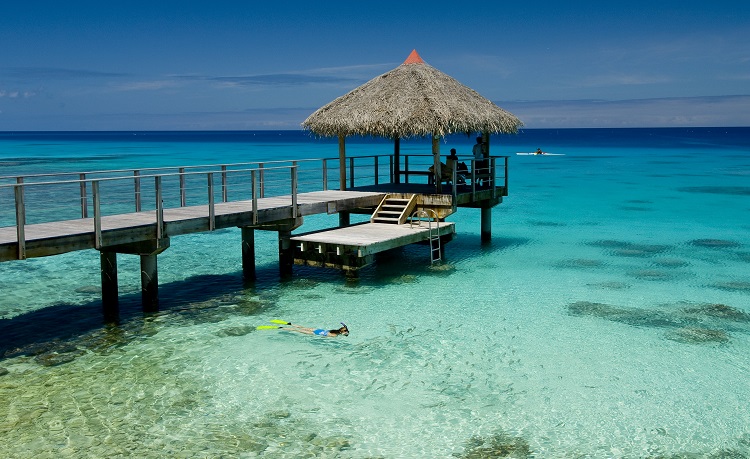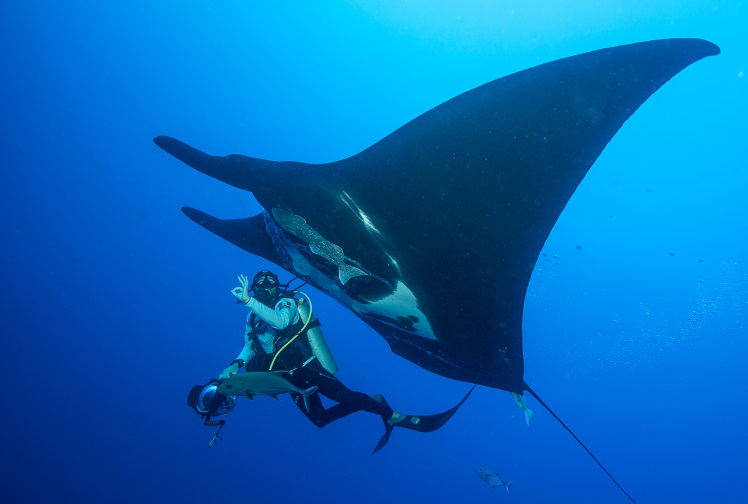Basslets in soft coral
21-Jun-2014 Back to Image Gallery
Cruising the shipwreck `Liberty' a spectacular beach dive at Tulamben, Bali, I came across this school of Orange Basslets among the many soft coral and gorgonian fans that decorate the wreck. I recognised a perfect wide angle close up photo opportunity, exactly what I was looking for as my camera system was set up for this genre. Even more compelling is the ease of capturing such an image as the Basslets will not move from the shelter of the coral so capturing the picture is as simple as putting the camera in position for a nice composition and just pulling the trigger, shot after shot. Brings to mind the old saying `easy as shooting fish in a barrel'
Photo Data: Location: Liberty Shipwreck, Tulamben, Bali Genre: Wide Angle Close Up. Photo Data: Nikon D200, Nikkor 10.5 lens + 1.4 Teleconvertor, Seacam Housing, Dual Seacam Strobes, Manual Exposure Mode. ISO 100. Exposure f8 @ 1/30th sec. Image by Kevin Deacon.
Photo Hints: The use of a wide angle lens provides excellent depth of field so many of the fish will still be in focus as they move about the scene. It is also more forgiving when framing the scene. It is often more effective to look over the top of the camera at the action instead of looking at the monitor or viewfinder. This allows the photographer to chose the best moments to trigger the shutter. Just make sure you have framed the picture well and shoot lots. Inevitably one or more great shots will be among your results when you review later. Holding the camera at arms length also disturbs the fish less as your body & bubbles will be further away from your subjects. Equipment Comments: Any wide angle lens and a strobe kit can be used for this genre. Personally I use a Seacam mini dome of perfect quality optical glass optics that reduces the overall size of my very large Seacam housing system and allows me to work much closer to the subject.
Interesting Facts: Basslets, the sub family Anthiinae consist over 100 species. The Orange Basslet, Pseudanthias squamipinnis, is commonly seen on most tropical reefs. In South Africa they call these fish `Goldie's" The males are more colourful and are seen constantly displaying and mating with the many females in the school. It must be exhausting rapidly swimming against current, chasing females and spawning all day, every day. I often ponder how long they live given the frenetic pace!



